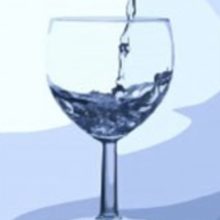Drinking water seems to be the most obvious thing to do and therefore does not need to be addressed. Au contraire. Are you one of the many adults experiencing mild or moderate dehydration and don’t even know it? Keeping yourself well hydrated is not just for when you exercise or during the warmer climate months. You can get just as dehydrated at higher altitudes or in colder climates when the skin loses moisture and you sweat less. Living in heated environments can be drying creating even more loss of fluid.
More than half the body’s weight is made up of water. Second to oxygen, every cell, tissue and organ including the brain needs water to function and survive. I remember to this day my microbiology professor back in nursing proclaiming that, “When it dries, it dies.”
When you are dehydrated, the body loses necessary electrolytes, and the cells and tissues do not receive enough fluid. People experiencing dehydration often complain of overall fatigue, joint and muscular discomfort, brain fog, and lightheadedness. These are just a few signs and symptoms.
The stress many experience during the holidays can contribute to dehydration. The increase in heart rate and breathing causes a loss of fluids. Dehydration also causes anxiety putting undo stress on the physical, mental and emotional bodies. The release of the stress hormone, cortisol, can worsen the situation. It can become a vicious cycle. We may also eat for emotional comfort and ignore the signals of thirst all together. It’s helpful to know that water can rehydrate and decrease the response we have to stress.
It’s important to know the difference between when you are hungry and when you are thirsty. At times when we are feeling lightheaded or tired, we tend to reach for food when, in actuality, we are really just thirsty. Quenching your thirst may avoid overeating and perhaps prevent holiday weight gain. A good check system is this: If you think you’re hungry, drink a glass of water first and wait 5-10 minutes. Then, if you are still hungry, satisfy your hunger and eat.
When it comes to the skin and aging, it is vital that your skin, the body’s largest organ, receive proper hydration to prevent the skin from drying out causing wrinkles and pre-mature aging. Keeping the body properly hydrated helps create more youthful and firmer skin. Pure water is the best source, even though foods, like fruit, vegetables and soups, contain a certain amount of fluid and hydrate the body well.
How much to drink? Drinking 6-8 glasses of water a day is a controversial subject. Some doctors agree while others find no scientific evidence supporting this recommendation. The amount of fluids you need to consume varies from person to person. The rule of thumb is this: drink before you get thirsty. Waiting until you are thirsty to drink is a sign you are already dehydrated.
The conscious approach is to be present and listen to the body’s signals. Our internal thirst meter will let us know how much water we need. We also need to use common sense to stay well hydrated when we are losing fluids as when we are sick with fever, vomiting or experiencing loose stools.
For those who find water less than appealing, try flavoring it with real fruit, a berry medley or cucumbers. Keep water with you. Glass bottles are preferred over plastic containers so if you happen to leave it in your car in warmer climates, you will not compromise the water as the plastic heats up.
If you are concerned if your fluid intake is adequate or not, then it is best to ask your health care provider the recommended amount of fluids that are appropriate for you, taking into consideration any health concerns, such as congestive heart failure, diabetes or kidney problems, that may be a contributing factor.
There are a few ways to check for dehydration in adults. Dryness of the lips and mouth is a sign of dehydration. The color of your urine is a good indicator if your fluid intake is adequate. Ideally, the urine is odorless.
The following is a guide of urine colors from the Cleveland Clinic…
- No color. Transparent: You’re drinking a lot of water. You may want to cut back.
- Pale straw color: You’re normal, healthy and well-hydrated
- Transparent yellow: You’re normal.
- Dark yellow: Normal but drink some water soon.
- Amber or honey color: You’re body isn’t getting enough water. Drink some now.
- If your urine is darker, see your doctor. Note that vitamin supplements, certain foods and diseases, and antibiotics can alter the color.
To end with a chuckle:
“Woke up late, so I put Red Bull in the coffee machine instead of water. Got halfway to work before I realized I forgot my car.” – anonymous
COPYRIGHT NOTICE- NO PART OF THIS ARTICLE MAY BE USED WITHOUT THE WRITTEN PERMISSION OF JAN KINDER.


